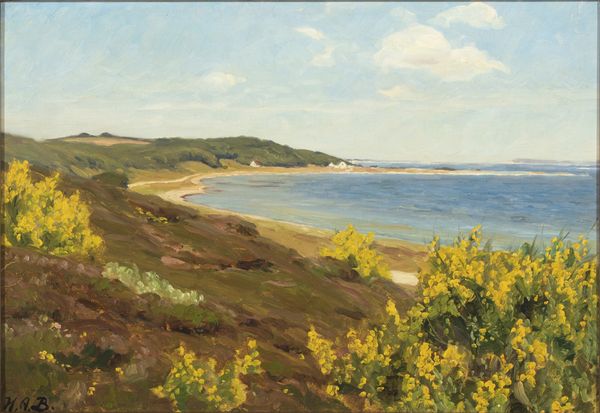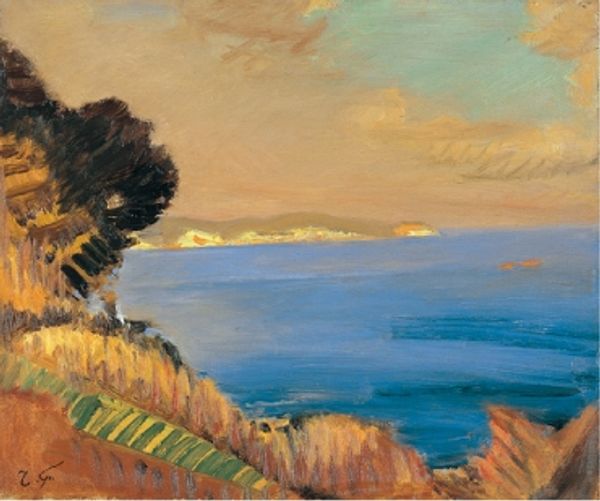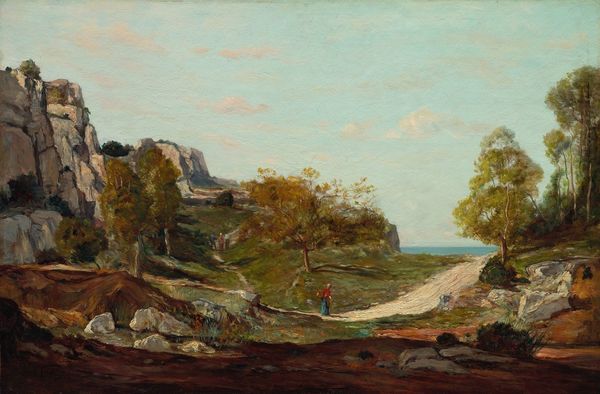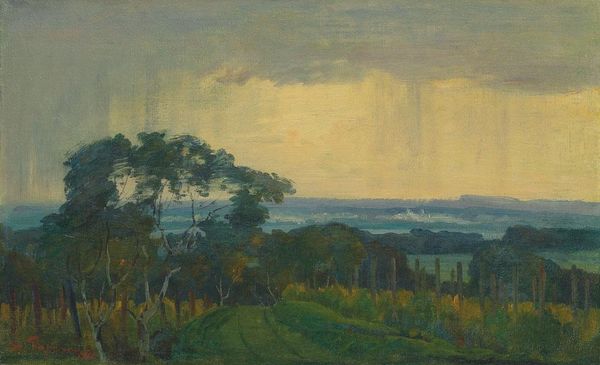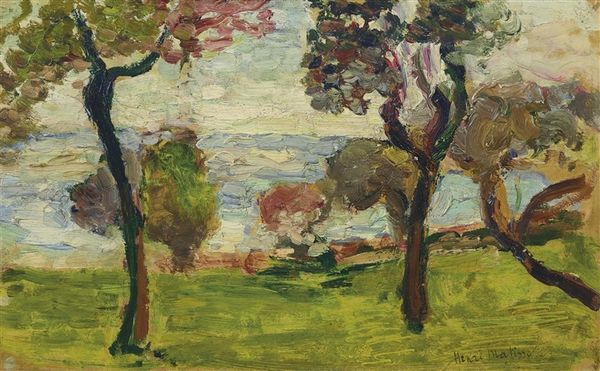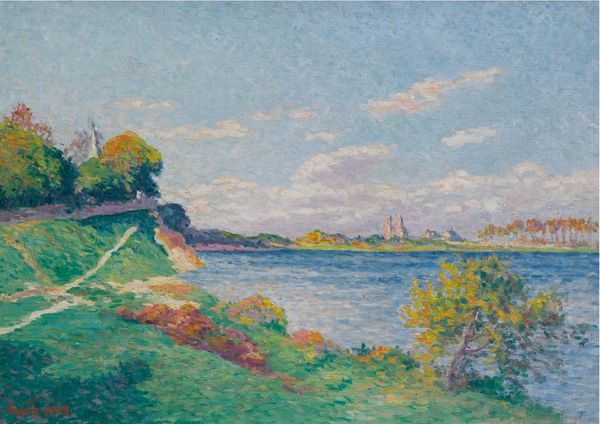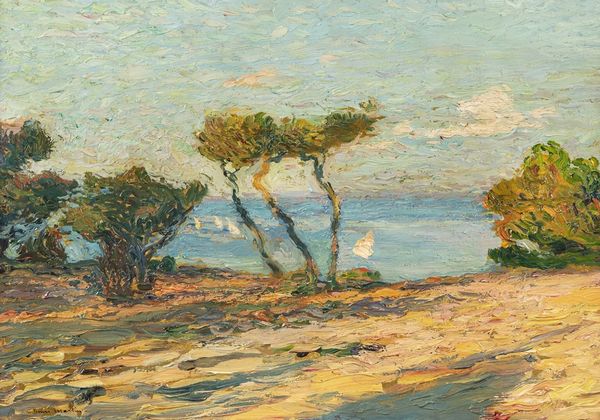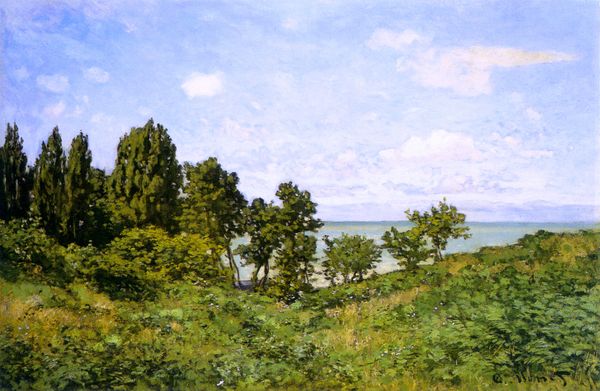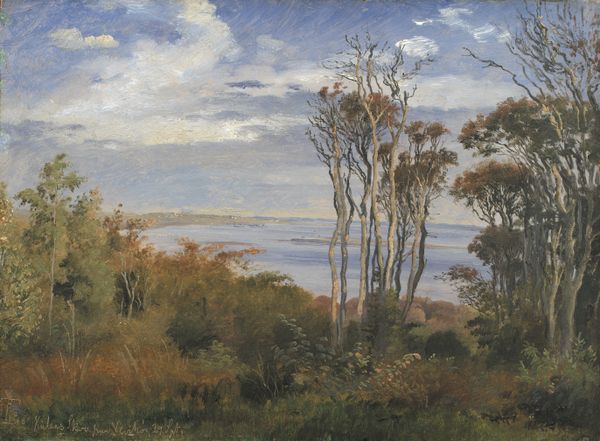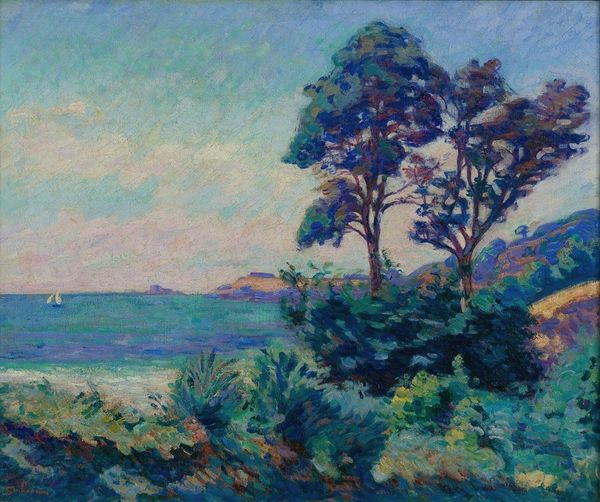
Dimensions: 80 cm (height) x 100 cm (width) (Netto)
Curator: This is Henrik Schouboe’s “The Edge of a Forest. A Clear September Day,” painted in 1938, here at the SMK. Editor: It evokes a sense of quiet observation. A path cuts through a russet field leading to trees which separate land and clouded sky, a distant body of water lurking at the horizon. It has an immediacy, likely composed *en plein air*, as the thick daubs of paint still seem wet. Curator: Indeed. And it speaks to a continuity of the Nordic landscape tradition. Look at the almost geometric ordering of the elements: land, forest, water, and sky—they remind us of the symbolic structuring we find in much earlier landscape paintings, how each element is charged. Editor: Charged perhaps, but also grounded in material reality. I’m struck by the thickness of the paint application, especially in the foreground, as though trying to capture the very texture of the earth itself. The facture seems as crucial to Schouboe as the symbolic register. It looks almost like a woven tapestry from afar! Curator: I see that; though consider how light plays here, evoking the melancholic feeling associated with the end of summer. The placement of that cloud in the upper right - that suggests something other than mere optical transcription, doesn't it? More an interior state made visible through natural symbolism. Editor: Possibly, though, if you consider the artist’s method. I suspect Schouboe created the painting very rapidly in a singular process of fieldwork. He wasn’t trying to necessarily reproduce emotional memory. What the work represents is material: oil paint capturing natural atmosphere via quick indexical marks. Curator: Perhaps we're both right. It's a reminder that what seems immediate and spontaneously observed also has deep roots in how we imbue our surroundings with meaning. Editor: Agreed. I'm now keen to investigate other artists working with similar constraints and comparable means.
Comments
No comments
Be the first to comment and join the conversation on the ultimate creative platform.

